Terpenes. A word you may have seen used more and more over recent years, but what exactly are terpenes?
Have you ever wondered how the strain Blue Dream can smell so similar to fresh blueberry doughnuts? Or how a sniff of the K.O. Kali-O seems to burst with citrus just like a California Orange? Yes, it is the cannabis. More specifically, what you are really smelling (and tasting) are terpenes.
Terpenes, pronounced TUR-peen, are a large and varied class of hydrocarbons (made up of hydrogen and carbon), produced by a wide variety of plants and also, some insects. Terpenes are referred to as terpenoids when denatured by oxidation (like being dried and cured) or chemically altered by some rearrangement of the carbon skeleton. They are the main component of any plant resin or essential oils and play many important roles in the plant kingdom- from deterring insect predation, protection from environmental stresses and vitally, as chemical building blocks for more complex molecules, like cannabinoids, certain hormones, vitamins (Vitamin A), pigments and sterols.
Terpenoids contribute to the scent of eucalyptus, the flavors of cinnamon, cloves, and ginger, and the color of yellow flowers. Well-known terpenoids include citral, menthol, and also cannabinoids.
Plant terpenoids are used extensively for their aromatic qualities. They play a role in traditional herbal remedies and are currently under investigation for antibacterial, anti-neoplastic (cancer halting), and other pharmaceutical functions.
We are all familiar with cannabis as medicine or as a recreational drug, but the more subtle aspect of it being an aromatic plant goes too often unsaid. The herbs we use in our kitchen are considered aromatic plants because they contain a particular terpene profile that gives a distinctive flavor. Cannabis is so complex from this point of view that the possible terpene combinations are endless, creating a broad spectrum of aromas and flavors.
Many plant terpenes act synergistically with other terpenes and some serve to either catalyze or inhibit formation of other compounds within a plant. For example, understanding the role of certain terpenes will allow scientists to manipulate cannabinoids to desired ratios. Some terpenes are said to modulate the physiological and psychoactive effects of cannabis.
Cannabis usually contains a significant amount of a terpene called beta-caryophyllene (BCP) which contributes to the aroma and flavor. Studies show that this terpene, also found in other legal herbs, spices and food plants (it contributes to the spiciness of black pepper), activates the CB2 receptor and acts as a non-psychoactive anti-inflammatory. Because it binds to a cannabinoid receptor, it is considered a cannabinoid and since the widespread natural plant product beta-caryophyllene is an FDA approved food additive and ingested daily with food, it is the first dietary cannabinoid.
The diverse palate of cannabis flavors is impressive enough, but arguably the most fascinating characteristic of terpenes is their ability to interact synergistically with other compounds in the plant, like cannabinoids. In the past few decades, most cannabis varieties have been bred to contain high levels of THC, and as a result, other cannabinoids like CBD, CBC, and CBN have fallen to just trace amounts. This has led growers to believe that terpenes help account for the unique effects induced by each cannabis strain.
This synergy has a scientific basis in our body’s endocannabinoid system. THC binds to receptors concentrated most heavily in the brain where psychoactive effects take place. Terpenes also bind to these receptor sites and affect their chemical output. They can also modify how much THC passes through the blood-brain barrier. Their hand of influence even reaches to neurotransmitters like dopamine and serotonin by altering their rate of production and destruction, their movement, and availability of receptors.
The effects these mechanisms produce vary from terpene to terpene; some are especially successful in relieving stress, while others promote focus and acuity. Myrcene, for example, induces sleep whereas limonene elevates mood. There are also effects that are imperceptible, like the gastroprotective properties of Caryophyllene.
Their differences may be subtle, but terpenes can add great depth to the horticultural art and connoisseurship of cannabis. Most importantly, terpenes may offer incredible medical value as they mediate our body’s interaction with therapeutic cannabinoids.
So to move forward in the quest for the ultimate Elixir I believe we should all start learning about each terpenes and what effects they produce. Here is a list of the most common terpenes found in cannabis.
Myrcene
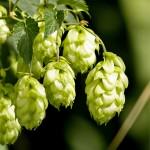
Myrcene is the most common terpene in marijuana strains (up to 60% of the essential oils of certain varieties) however, it is not found in hemp textiles. It is also found in large quantities in hops or in the West Indian wood (Saint Thomas Bay). Its smell is very similar to cloves (girofle). Myrcene is a potent analgesic, anti-inflammatory and antibiotic. It blocks the action of cytochrome, aflatoxin B, and other pro-mutagenic carcinogens. It also has a relaxing, calming, anti spasmodic and sedative effect. Acting in synergy with THC, myrcene increases its psychoactive potential.
Limonene
Limonene is often the second, third or fourth terpene found in cannabis resin. This family of terpenes produces the typical smell we all recognise as citrus. Limonene has anti fungal and anti bacterial properties and is also anti-carcinogenic.
 It prevents the deterioration of the RAS gene, one of the factors that contribute to the development of tumors. It also protects against Aspergillus and carcinogens present in smoke. Limonene quickly and easily penetrates the blood-brain barrier, which increases systolic pressure. During testing on the effects of limonene, participants experienced an increase in attention, mental focus, well-being and even sex drive. Limonene is used sometimes in spray form, to treat depression and anxiety. It also has the effect of reducing the unpleasantness of gastric acid and stimulates the immune system. Plants use limonenes to ward off predators; for example, it repels flies like any insecticide.
It prevents the deterioration of the RAS gene, one of the factors that contribute to the development of tumors. It also protects against Aspergillus and carcinogens present in smoke. Limonene quickly and easily penetrates the blood-brain barrier, which increases systolic pressure. During testing on the effects of limonene, participants experienced an increase in attention, mental focus, well-being and even sex drive. Limonene is used sometimes in spray form, to treat depression and anxiety. It also has the effect of reducing the unpleasantness of gastric acid and stimulates the immune system. Plants use limonenes to ward off predators; for example, it repels flies like any insecticide.
Caryophyllene
Caryophyllene can be found in various herbs and spices, particularly in black pepper, which contributes to the spicy flavour. It is a local anti inflammatory and analgesic, and one of the active ingredients of the clove (Giroflé). It is an efficient remedy to relieve toothache.
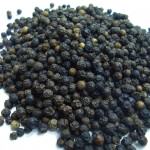 It also has anti fungal properties. This terpene has the particularity of selectively activate the cannabinoid 2 receptors (CB2), while it is not a cannabinoid. This discovery opens the door to many possibilities in medicinal research.
It also has anti fungal properties. This terpene has the particularity of selectively activate the cannabinoid 2 receptors (CB2), while it is not a cannabinoid. This discovery opens the door to many possibilities in medicinal research.
Pinene
Pinene is responsible for the familiar smell associated with pine and fir trees, and to be more precise, its resin. It is the main ingredient of the essence of turpentine. It is present also in many plants such as Sage or Rosemary. Pinene is used in medicine as an expectorant, bronchodilator, anti inflammatory and local antiseptic. It also crosses the hemato encaphalic barrier very easily, where it acts as an inhibitor of acetylcolynesterasics, preventing the destruction of molecules responsible for the transmission of information, which results in memory improvement. It
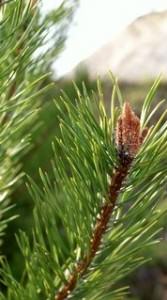
is largely due to the presence of pinenes that Rosemary and Sage have been considered to be beneficial plants during thousands of years of traditional medicine. This terpene can, in part, counteract the effects of THC, which leads to a decrease in the acetylcholine levels. The result is that the memory fails more with pure THC than with THC mixed with pinene. Skunk strains are, for example, recognised for their high levels of pinenes. Because this produces a bronco dilator effect, the smoke of plants rich in pinene give the sensation of sucking more air, which can cause hyperventilation or sometimes cough. Pinene also improves concentration, personal satisfaction and energy, but it may be limited by the effects of the terpinol.
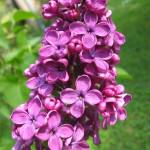
Terpinol
Terpinol smells of lilac, crabapple blossoms and lime blossoms. During tests on mice, their mobility was reduced to 45%. This explains the sedative effectof some marijuana strains. Terpinol is often found in strains that have a high level of pinenes, the aromas of which can hide the terpinol smell.
Borneol
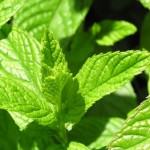
Borneol has aroma of mint and camphor. It is used in Chinese medicine against fatigue, stress, or to recover from illness. The Super Silver Haze Marijuana strain from Sensi seeds is known for its camphor aromas, and its effect is both relaxing and psychedelic. Hence, we can suppose that it contains a good amount of borneol.
Linalool
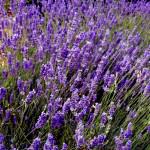
Linalool has a floral smell like lavender and spring flowers. Humans are able to smell it at very low levels, from 1 PPM in air. Linalool is currently used in the treatment of various cancers. It also has a powerful calming action, anti anxiety, and produces a sedative effect. In tests on mice it was discovered that their activity decreased by 75%. Linalool is thus partly responsible for the sedative effects of certain marijuana strains. It also has analgesic and anti-epileptic properties.
Eucalyptol
Eucalyptol (also called 1,8-cineol) is the main ingredient of eucalyptus essential oil. It has the characteristic

minty smell of this tree and is also found in small amounts in marijuana. Its effects relieve pain and improve concentration and inner balance. Plants containing eucalyptol enhance meditation and concentration.
Nerolidol
Nerolidol, with woody and fresh bark aromas, can be found in ginger, niaouli and citronella. It has anti fungal, anti leishmaniasis and anti-malarial properties. It also produces a sedative effect.
Other Terpenes
Other terpenes that can be found in marijuana resin are, for example, phellandrene, phytol, humulene, pulegone, bergamotene,farnesene, D3-carene, elemene, fenchol, aromadendrene, bisabolene, and many more…

Sources:
http://www.leafly.com/knowledge-center/cannabis-101/terpenes-the-flavors-of-cannabis-aromatherapy
http://berkeleypatientscare.com/2010/10/08/terpenes-terpenoids-and-cannabis/
http://www.alchimiaweb.com/blogen/marijuana-terpenes-effects/
